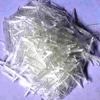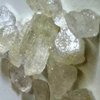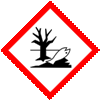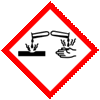Thymol BP Ph Eur EP JP IP USP NF Food Grade Manufacturers, with SDS GHS MSDS Sheet |
Supplier, Manufacturer, Exporter of Thymol BP Ph Eur EP JP IP USP NF Food Grade, Muby Chemicals of Mubychem Group, established in 1976, is the original manufacturers of Specialty Chemicals, Pharmaceutical Excipient, Fragrance Food & Flavor chemicals, Reagent Grade Chemicals, Shale Gas Fracturing Chemicals in India. Mubychem Group has several manufacturing facilities spread across Western India and world wide contacts and toll manufacturers. We are exporting globally to countries like USA, Canada, Europe, UAE, South Africa, Tanzania, Kenya, Egypt, Nigeria, Cameroon, Uganda, Turkey, Mexico, Brazil, Chile, Argentina, Dubai, Korea, Vietnam, Thailand, Malaysia, Indonesia, Australia, China, Germany, France, Italy Portugal, Bangladesh, etc. The products are offered as per required specifications and in correct shape and size in mm or meshs or microns as specified by the buyer. The participating units have one or more accreditations like FDA - cGMP and GLP approval, ISO-9001 Certified, "REACH" Registered, ISO-14001, ISO/IEC 17025, ISO-22000, FSSC 22000, ISO 45001, Kosher Certified, Halal Certified, HACCP, FSSAI. We offer Commercial Pure & IP BP EP Ph Eur USP NF JP FCC Food Grade Analytical Reagent Grades of Chemicals |
| Bookmark this Web Site -- or -- Email This Page Info to a Colleague or Yourself |
Search our website here:







Thymol: CAS Number: 89-83-8, EINECS EC Number: 201-944-8, Molecular Formula: C10H14O, Molecular Weight: 150.22, FEMA Number: 3066, HS Code ---**
How big is your requirement or how small
We serve it all.
Specifications, Safety Data Sheet, Manufacturing process details, Wholesale retail buy sell prices, Uses etc available on line in these pages for Thymol.
For SDS MSDS Sheet Click
SDS MSDS Sheet of Thymol Manufacturers
Thymol
Pure BP Ph Eur EP IP JP USP NF Food Grade Suppliers


Thymol (also known as 2-isopropyl-5-methylphenol, IPMP) is a natural monoterpenoid phenol derivative of cymene, C10H14O, isomeric with carvacrol, found in oil of thyme, and extracted from Thymus vulgaris (common thyme) and various other kinds of plants as a white crystalline substance of a pleasant aromatic odor and strong antiseptic properties. Thymol has been used in alcohol solutions and in dusting powders for the treatment of tinea or ringworm infections, and was used in the United States to treat hookworm infections. It is also used as a preservative in halothane, an anesthetic, and as an antiseptic in mouthwash. Thymol is also the active antiseptic ingredient in some toothpastes. Thymol can also be used as a medical disinfectant and general purpose disinfectant.
Thymol BP Ph Eur Grade Specifications
C10H14O --- 150.2 --- CAS 89-83-8
DEFINITION
5-Methyl-2-(methylethyl)phenol.
CHARACTERS
Appearance: Colourless crystals.
Solubility: Very slightly soluble in water, very soluble in ethanol (96 per cent), freely soluble in essential oils and in fatty oils, sparingly soluble in glycerol. It dissolves in dilute solutions of alkali hydroxides.
IDENTIFICATION
First identification: B
Second identification: A, C, D
A. Melting point: 48C to 52C.
B. Infrared absorption spectrophotometry.
C. Dissolve 0.2 g with heating in 2 mL of dilute sodium hydroxide solution and add 0.2 mL of chloroform. Heat on a water-bath. A violet colour develops.
D. Dissolve about 2 mg in 1 mL of anhydrous acetic acid. Add 0.15 mL of sulfuric acid and 0.05 mL of nitric acid. A bluish-green colour develops.
TESTS
Appearance of solution: The solution is not more opalescent than reference suspension and not more intensely coloured than reference solution.
Dissolve 1.0 g in 10 mL of dilute sodium hydroxide solution.br>
Acidity: To 1.0 g in a 100 mL glass-stoppered conical flask add 20 mL of water. Boil until dissolution is complete, cool and stopper the flask. Shake vigorously for 1 min. Add a few crystals of the substance to be examined to initiate crystallization. Shake vigorously for 1 min and filter. To 5 mL of the filtrate add 0.05 mL of methyl red solution and 0.05 mL of 0.01 M sodium hydroxide. The solution is yellow.
Related substances: To pass the test by gas chromatography.
Residue on evaporation: Maximum 0.05 per cent.
STORAGE
Protected from light.
Thymol USP NF Grade Specifications
C10H14O 150.22
Phenol, 5-methyl-2-(1-methylethyl)-.
Thymol.
p-Cymen-3-ol CAS 89-83-8
Thymol contains not less than 99.0 percent and not more than 101.0 percent of C10H14O.
Packaging and storage: Preserve in tight, light-resistant containers.
Identification:
A: Infrared Absorption 197K .
B: It meets the requirements under Melting range.
Melting range: between 48 and 51C; but when melted, Thymol remains liquid at a considerably lower temperature.
Limit of nonvolatile residue: Volatilize about 2 g, accurately weighed, on a steam bath, and dry at 105 to constant weight: not more than 0.05% of residue remains.
Assay: Transfer about 100 mg of Thymol, accurately weighed, to a 250-mL iodine flask, and dissolve in 25 mL of 1 N sodium hydroxide. Add 20 mL of hot dilute hydrochloric acid (1 in 2), and immediately titrate with 0.1 N bromine VS to within 1 to 2 mL of the calculated endpoint. Warm the solution to between 70 and 80 , add 2 drops of methyl orange, and continue the titration slowly, swirling vigorously after each addition. When the color of the methyl orange is bleached, add 2 drops of 0.1 N bromine, shake for 10 seconds, add 1 drop of methyl orange, and shake vigorously. If the solution is red, continue the titration, drop-wise and with shaking, until the color is discharged. Repeat the alternate addition of the titrant and the methyl orange until the red color is discharged. Each mL of 0.1 N bromine is equivalent to 3.755 mg of C10H14O.
Specifications of Thymol Food Grade Specifications:
Appearance (Color): White
Appearance (Form): Powder or Crystals
Initial Melting Point: >_ 49 °C
Final Melting Point: <_ 51 °C
Infrared spectrum: Conforms to Structure
Purity (GC): >_ 99.0 %
Solubility (Turbidity): Clear to Very Slightly Hazy in 1gm/1ml 95% Ethanol
Solubility (Color): Colorless
Arsenic (As): <_ 3.0 ppm
Cadmium (Cd): <_ 1.0 ppm
Mercury (Hg): <_ 1.0 ppm
Lead (Pb): <_ 10.0 ppm.
We also manufacture Thymol EP JP IP Grade.
For Original Monographs of IP Indian Pharmacopoeia BP British Pharmacopoeia USP US Pharmacopoeia FCC Food Grade product, please check with the respective web-pages or books.
We also manufacture and supply as under:
Manufacturers:
MUBY CHEMICALS
Ambernath Mumbai, Ankleshwar Gujarat, India
TEL: (OFFICE) +912223770100, +912223726950
Current Date Time in India GMT+5:30
e-mail: info@mubychem.com
USA, Canada, Mexico and other American neighbouring buyers may
e-mail: us@mubychem.com
Call toll-free 1-877-682-9243 (1-877-MUBYCHEM)

Copyright and Usual Disclaimer is Applicable.
Last 10 November, 2025





Exporters to USA Canada UAE Europe South Africa Tanzania Kenya Uganda Egypt Nigeria Turkey Mexico Brazil Argentina Chile Dubai etc.
Global or International Suppliers, Exporters, Importers, Manufacturers
I shall pass through this world, but once. If therefore, there is any good that I can do, or if there is any favor that I can show to a fellow human being, let me do it now. Let me not defer or neglect it. For I shall not tread this way again
Thymol SDS, Safety Data Sheet
MSDS Sheet, Material Safety Data Sheet 21-Nov-20
1. Product Identification
Product Name & Other Names: Thymol, 2-isopropyl-5-methylphenol, IPMP, 5-Methyl-2-(methylethyl)phenol
CAS No.: 89-83-8
EINECS EC-No.: 201-944-8
FEMA Number: 3066
Molecular Weight: 150.22
Chemical Formula: C10H14O
Relevant uses and uses advised against (if any): Industrial Manufacturing.
Suppliers: As per letterhead.
2. Hazards Identification
GHS, Globally Harmonized System Classification in accordance with 29 CFR 1910
Classification according to Regulation (EC) No 1272/2008
Acute toxicity, Oral Category 4, H302
Skin corrosion/irritation Category 1A, B, C, H314
Hazardous to the aquatic environment, long-term hazard Category 1, H411
Labeling according GHS & Regulation (EC) No 1272/2008
GHS Label Elements  Aquatic Toxicity |
GHS Label Elements  Corrosive |
Signal Words: Danger
Hazard statements:
H302: Harmful if swallowed.
H314: Causes severe skin burns and eye damage.
H411: Toxic to aquatic life with long lasting effects.
Precautionary statements:
P262: Do not get in eyes, on skin, or on clothing.
P264: Wash skin thoroughly after handling.
P270: Do not eat, drink or smoke when using this product.
P272: Contaminated work clothing should not be allowed out of the workplace.
P273: Avoid release to the environment.
P280: Wear protective gloves/protective clothing/eye protection/face protection.
P330: Rinse mouth
P301+P312: IF SWALLOWED: Call a POISON CENTER or doctor/physician if you feel unwell.
P303+361+353: IF ON SKIN (or hair): Remove/Take off immediately all contaminated clothing. Rinse skin with water/shower.
P305+P351+P338: IF IN EYES: Rinse cautiously with water for several minutes. Remove contact lenses, if present and easy to do. Continue rinsing.
P314: Get Medical advice/attention if you feel unwell.
P301+330+331: IF SWALLOWED: Rinse mouth. Do NOT induce vomiting.
P332+P313: If skin irritation occurs: Get medical advice/attention.
P337+P313: If eye irritation persists: Get medical advice/ attention.
P360: Rinse immediately contaminated clothing and skin with plenty of water before removing clothes.
P391: Collect spillage.
P501: Dispose of contents/ container to an approved waste disposal plant.
This substance/mixture contains no components considered to be either persistent, bioaccumulative and toxic (PBT), or very persistent and very bioaccumulative (vPvB) at levels of 0.1% or higher.
Classification according to EU Directives 67/548/EEC or 1999/45/EC:
Hazard symbols:
C = Corrosive
N = Dangerous for the environment.
R-phrases:
R22 Harmful if swallowed.
R34 Causes burns.
R41 Risk of serious damage to eyes.
R51/53 Toxic to aquatic organisms, may cause long-term adverse effects in the aquatic environment.
3. Composition/Information on Ingredients
Product Name & Other Names: Thymol, 2-isopropyl-5-methylphenol, IPMP, 5-Methyl-2-(methylethyl)phenol.
CAS No.: 89-83-8
EINECS EC-No.: 201-944-8
FEMA Number: 3066
4. First Aid Measures
Always seek medical attention after first aid measures are provided.
Inhalation: Remove to fresh air. If not breathing, give artificial respiration. If breathing is difficult, give oxygen. Get medical attention.
Ingestion: Never give anything by mouth to an unconscious person. Get medical attention.
Skin Contact: Wipe off excess material from skin then immediately flush skin with plenty of water for at least 15 minutes. Remove contaminated clothing and shoes. Get medical attention. Wash clothing before reuse. Thoroughly clean shoes before reuse.
Eye Contact: Immediately flush eyes with plenty of water for at least 15 minutes, lifting lower and upper eyelids occasionally. Get medical attention immediately.
5. Fire Fighting Measures
Flammability of the Product: Non-flammable. However, it may burn at high temperature.
Products of Combustion: Carbon oxides.
Fire Extinguishing Media: Use any means suitable for extinguishing surrounding fire. Use water spray, alcohol-resistant foam, dry chemical or carbon dioxide.
Special Information: In the event of a fire, wear full protective clothing and NIOSH-approved self-contained breathing apparatus with full face piece operated in the pressure demand or other positive pressure mode. At high temperatures under fire conditions, it may produce toxic or irritating fumes. Fire-extinguishing work is done from the windward and the suitable fire-extinguishing method according to the surrounding situation is used. Uninvolved persons should evacuate to a safe place.
6. Accidental Release Measures
Personal precautions, protective equipment, and emergency procedures: Avoid breathing dust/fumes/gas/mist/vapors/spray. Use individual protective equipment (waterproof boots, suitable protective clothing, safety glasses, etc). Restrict unprotected personnel from the area. Prevent any contact with hot surfaces. Do not approach facing the wind. Do not touch the spilled material.
Environmental precautions: Do not let the product enter drains, soil, or water sources.
Methods and materials used for containment Cleanup procedures and Storage:
Small Spill: Avoid dust formation. Avoid breathing dust. Ensure adequate ventilation. Use appropriate tools to put the spilled solid in a convenient waste disposal container. Finish cleaning by spreading water on the contaminated surface and dispose of according to local and regional authority requirements.
Large Spill: Avoid touching the spilled material. Do not let the product enter drains. Use a shovel to put the material into a convenient waste disposal container. Do not contaminate the environment.
7. Handling and Storage
Precautions for safe handling: Apply according to good manufacturing and industrial hygiene practices. Ensure proper ventilation. In case of insufficient ventilation, wear suitable respiratory equipment. Wash thoroughly after handling. Do not drink, eat, or smoke while handling. Do not ingest. Avoid contact with skin, eyes, and clothing. Minimize dust generation. Avoid breathing dust/fumes/gas/mist/vapors/spray. Avoid contact with eyes, skin, and clothing. Keep container tightly closed. Avoid ingestion and inhalation. Use individual protective equipment (waterproof boots, suitable protective clothing, safety glasses, etc). Prevent any contact with hot surfaces.
Conditions for safe storage, including any incompatibilities: Store in cool, dry, and ventilated area away from heat sources and protected from sunlight in tightly closed original container. Keep air contact to a minimum. Do not leave the material container open. Store protected from heat, sparks and ignition sources and incompatible materials. Avoid contact with skin and eyes. Avoid inhalation of dust/mist/vapor. Do not store with incompatible materials like strong oxidizing agents. Moisture sensitive.
8. Exposure Controls/Personal Protection
Airborne Exposure Limits: This product, as supplied, does not contain any hazardous materials with occupational exposure limits established by the region-specific regulatory bodies.
Ventilation System: A system of local and/or general exhaust is recommended to keep employee exposures as low as possible. Local exhaust ventilation is generally preferred because it can control the emissions of the contaminant at its source, preventing dispersion of it into work area.
Personal Respirators (NIOSH Approved): For conditions of use where exposure to dust or mist is apparent and engineering controls are not feasible, a particulate respirator may be worn. For emergencies or instances where the exposure levels are not known, use a full-face positive-pressure, air-supplied respirator.
Skin Protection: Wear protective gloves and clean body-covering clothing.
Eye Protection: Use chemical safety goggles and/or full face shield where dusting or splashing of solutions is possible. Maintain eye wash fountain and quick-drench facilities in work area.
Other Control Measures: Maintain good housekeeping in work area. Dust deposits on floors and other surfaces may pick up moisture and cause the surfaces to become slippery and present safety hazards. Handle in accordance with good industrial hygiene and safety practice.
9. Physical and Chemical Properties
Appearance: It is white or colorless crystalline powder.
Odor: characteristic.
Odor threshold: Not available.
pH: 5-7 @ 0.8 g/l
Relative Density: 0.97 g/mL at 20C (68F)
Boiling Point: 233C - lit.
Flash point: 104C
Melting Point: 49 - 51C.
Auto-ignition temperature: Not available.
Decomposition temperature: Not available.
Upper/lower flammability or explosive limits: Not available.
Vapor pressure: Not available.
Vapor density: Not available.
Evaporation rate: Not available.
Flammability (solid, gas): Not available.
Partition coefficient: n-octanol/water: Not available.
Solubility: It is slightly soluble in water.
Viscosity: Not available.
Molecular Weight: 150.22
Chemical Formula: C10H14O
10. Stability and Reactivity
Stability: Stable under ordinary conditions of use and storage.
Hazardous Decomposition Products: It emits carbon oxides and toxic fumes when heated to decomposition.
Hazardous Polymerization: Will not occur.
Incompatibilities: Strong oxidizing agents.
Conditions to Avoid: Incompatibles and heat.
11. Toxicological Information
Toxicity data:
LD50 Oral - Rat - male and female - 980 mg/kg(Thymol)
LD50 Dermal - Rat - male and female - > 2,000 mg/kg
Carcinogenic Effects: No component of this product present at levels greater than or equal to 0.1% is identified as probable, possible or confirmed human carcinogen by IARC, ACGIH, NTP, OSHA.
Mutagenic Effects: Not available.
Developmental Toxicity: Not available.
Reproductive Effects: No information available.
12. Ecological Information
Toxicity to fish: LC50 - Oryzias latipes - 4.7 mg/l - 96.0 h
Toxicity to daphnia and other aquatic invertebrates: Immobilization LC50 - Daphnia magna (Water flea) - 4.5 mg/l - 48 h.
Environmental Fate: Readily degradable.
Results of PBT and vPvB assessment: This substance/mixture contains no components considered to be either persistent, bioaccumulative and toxic (PBT), or very persistent and very bioaccumulative (vPvB) at levels of 0.1% or higher.
13. Disposal Considerations
Whatever cannot be saved for recovery or recycling should be managed in an appropriate and approved waste disposal facility. Processing use or contamination of this product may change the waste management options. State and local disposal regulations may differ from federal disposal regulations. Dispose of container and unused contents in accordance with law.
14. Transport Information
DOT USA, TDG Canada & ADR/RID Europe:
UN number: 2430 Class: 8 Packing group: III
Proper shipping name: ALKYLPHENOLS, SOLID, N.O.S. (THYMOL)
IMDG/IMO:
UN number: 2430 Class: 8 Packing group: III
Proper shipping name: ALKYLPHENOLS, SOLID, N.O.S. (THYMOL)
IATA:
UN number: 2430 Class: 8 Packing group: III
Proper shipping name: ALKYLPHENOLS, SOLID, N.O.S. (THYMOL)
15. Regulatory Information
USA:
SARA 313: Does not contain any chemical components with known CAS numbers that exceed the threshold (De Minims) reporting levels established by SARA Title III, Section 313.
SARA 311/312 Hazards: Acute Health Hazard, Chronic Health Hazard
California Prop. 65 Components: This product does not contain any chemicals known to State of California to cause cancer, birth defects, or any other reproductive harm.
16. Other Information
European Labeling in Accordance with EC Directives:
H302: Harmful if swallowed.
H314: Causes severe skin burns and eye damage.
H411: Toxic to aquatic life with long lasting effects.
Classification according to EU Directives 67/548/EEC or 1999/45/EC:
Hazard symbols:
C = Corrosive
N = Dangerous for the environment.
R-phrases:
R22 Harmful if swallowed.
R34 Causes burns.
R41 Risk of serious damage to eyes.
R51/53 Toxic to aquatic organisms, may cause long-term adverse effects in the aquatic environment.
Disclaimer:
**************************
Our company provides this MSDS sheet in good faith but makes no representation as to its comprehensiveness or accuracy. This SDS sheet is intended only as a guide to the appropriate precautionary handling of the material by a properly trained person using this product. The above information has been compiled from various sources and has the possibility of discrepancy and being out-dated information. Individuals receiving the information must exercise their independent judgment and do further search in determining its appropriateness for a particular purpose. In no case shall our company be liable to loss or damages by the product user.
**************************
















